As winter sets in and temperatures plummet, it becomes essential to consider the well-being of outdoor birds.
These resilient creatures face the challenges of frigid weather, limited food sources, and potential hazards during the cold season.
By understanding the importance of providing warmth, shelter, and nourishment, we can make a significant difference in helping outside birds survive and thrive in winter.
In this article, we will explore practical strategies and considerations to ensure the comfort and welfare of our feathered friends during this challenging time.
By implementing these measures, we can create a safe and inviting environment that supports their needs and fosters a deeper connection with the natural world around us.
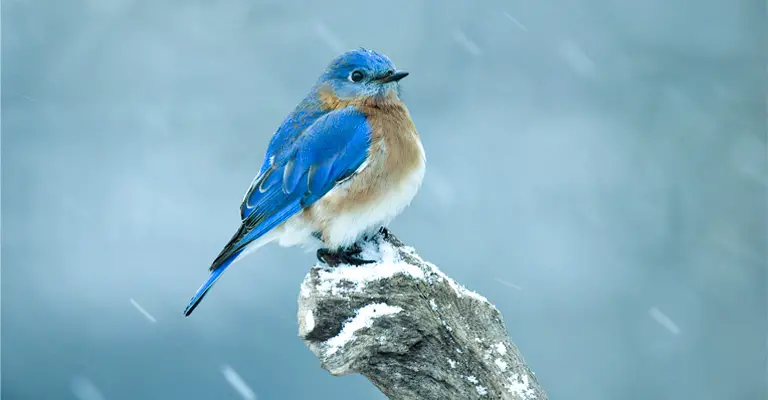
Bird’s Body Temperature
Birds have a remarkable ability to maintain a high body temperature, typically ranging between 100°F and 110°F, with an average of about 104°F.
This elevated temperature is essential for their physiological functions and overall well-being. However, during winter, finding sufficient food to sustain this high body temperature can be challenging for birds.
The cold temperatures and reduced food availability make it a demanding task. Birds rely on their metabolic rate, the insulation provided by feathers, and energy-conserving behaviors like roosting and torpor to manage their body temperature.
Indeed, maintaining their high body temperature is crucial for their survival and successful navigation through harsh winter conditions.
How Do Birds Stay Warm in Winter?
Birds have several adaptations that help them stay warm during winter. Some of their techniques are as followed.
Feather Insulation
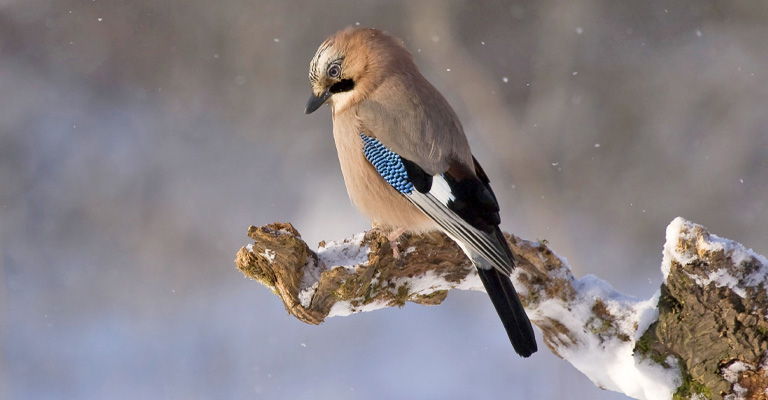
Feathers play a vital role in providing insulation and helping birds conserve heat. A bird’s plumage consists of two main types of feathers: contour feathers and down feathers.
Contour feathers cover the bird’s body, while down feathers lie beneath the contour feathers and serve as an additional layer of insulation.
These feathers trap air close to the bird’s skin, creating a barrier against the cold. The air pockets within the feathers prevent heat loss and maintain a warm microclimate next to the bird’s body.
Roosting
Birds utilize various roosting strategies to conserve heat and shelter themselves from harsh weather conditions.
They often seek out protected areas such as tree cavities, dense shrubs, or evergreen trees, which offer them both shelter and insulation.
By roosting together in groups, birds can huddle closely, sharing body heat and reducing the heat loss experienced by individuals.
This communal roosting behavior helps them stay warm during cold nights and conserves energy that would otherwise be expended to generate body heat.
Sunbathing
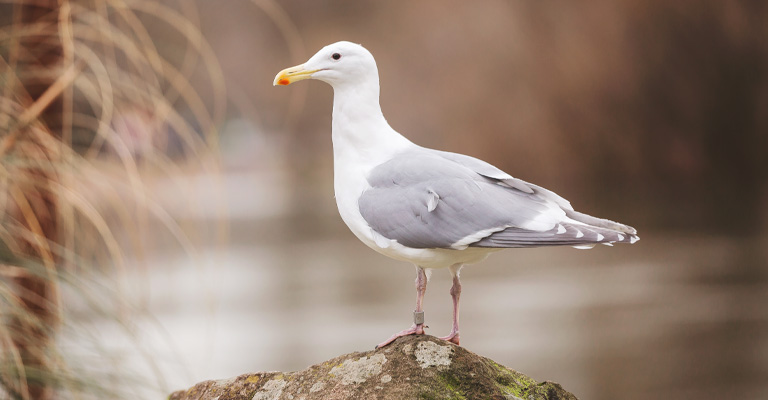
Despite the chilly weather, birds engage in sunbathing as an effective means of warming up. When the sun is out, birds position themselves to maximize exposure to its rays.
They spread their feathers, exposing their skin to absorb the sunlight’s warmth. The absorbed heat is then transferred to the bird’s body, raising its internal temperature.
Sunbathing is particularly important for birds as it helps them revitalize their energy levels and maintain their metabolic processes during winter.
Physical Activity
Birds engage in physical activity, even in cold weather, to generate heat and maintain their body temperature. By flapping their wings, hopping, or shivering, birds increase their metabolic rate, which generates body heat.
This constant movement and muscle activity allow them to stay warm and prevent freezing. Additionally, physical activity helps improve blood circulation, ensuring that warm blood reaches the extremities and vital organs, preventing frostbite and other cold-related injuries.
Fat Reserves
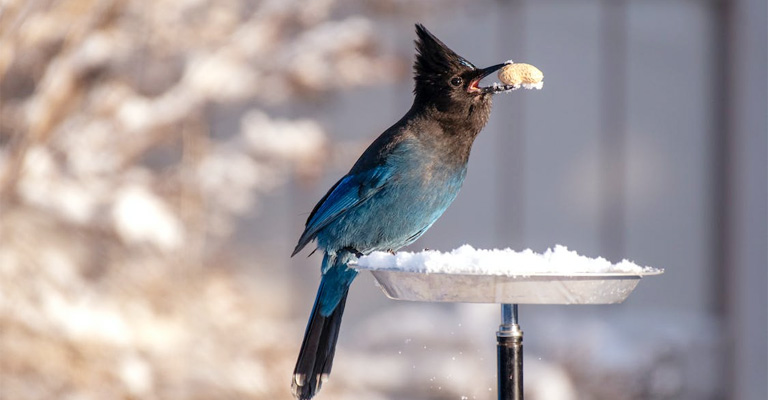
Many bird species build up fat reserves during the fall and winter months. Fat is a good insulator and serves as an energy source for generating heat through metabolism.
This technique is not applicable to all species but most of them in the cold region use it.
Adjusting Metabolic Rate
Birds can regulate their metabolic rate to conserve energy and maintain body temperature. During cold weather, they may reduce their metabolic rate to conserve energy and heat.
These adaptations allow birds to survive in cold winter conditions by minimizing heat loss and maintaining their body temperature within a suitable range.
How to Keep Outside Birds Warm in Winter
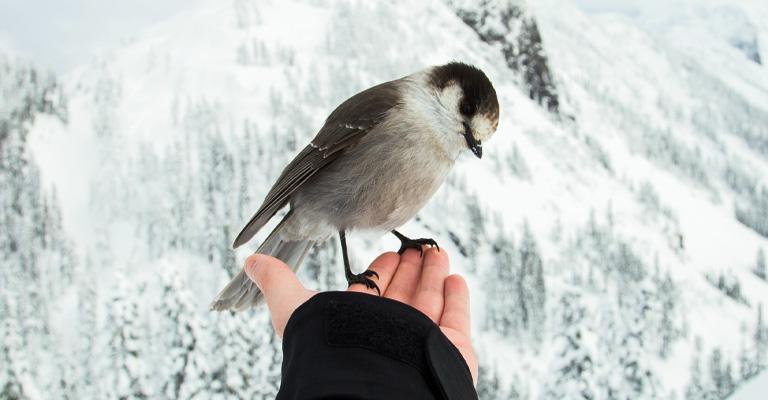
This is indeed a fact of humanity to help those beautiful birds to survive in the winter. To help keep outside birds warm during winter, you can take the following steps:
Provide High-Fat Foods
One of the most effective ways to help birds maintain their body temperature in winter is by offering them high-fat foods.
Birds require extra energy during cold weather to keep warm, and fats serve as an excellent source of concentrated energy.
Foods such as suet, peanuts, and black oil sunflower seeds are rich in fats and provide birds with the necessary calories to generate heat.
Suet feeders and birdseed mixes with high-fat content can be placed in bird feeders to attract a variety of species and supply them with the vital nutrients they need.
Provide Water
Water is essential for birds’ survival, even in freezing temperatures. To keep outside birds hydrated during winter, it is crucial to provide a fresh and unfrozen water source.
Use a heated birdbath or place a small heater or a birdbath de-icer in the water to prevent it from freezing. Regularly check the water source and remove any ice that may form.
By providing a reliable water supply, you ensure that birds have access to hydration, which is necessary for their metabolic processes and overall well-being.
Provide Shelter
The shelter is essential for birds to seek refuge from cold winds, precipitation, and extreme temperatures. Consider providing various forms of shelter to accommodate different bird species.
Birdhouses or nesting boxes placed in protected areas can serve as warm roosting sites. Ensure the birdhouses have appropriate dimensions and insulation to retain heat.
Dense shrubs, evergreen trees, or bushes can also provide natural shelter. These natural habitats create windbreaks and offer protection against the elements.
Install a Heated Bird Bath
Water sources can freeze in winter, so consider installing a heated bird bath or using a birdbath heater to ensure birds have access to unfrozen water for drinking and bathing.
Additionally, providing brush piles or leaving areas with dense vegetation untouched can create safe spaces for birds to seek cover.
Remember, it’s important not to rely solely on human intervention. Birds have evolved to adapt to their environment, and it’s crucial to maintain their natural habitats and food sources as well. Still, you should do as much as you can to help those freezing lives.
FAQs
Yes, birds that are exposed to cold temperatures for prolonged periods of time may develop hypothermia, which can lead to illness and even death. Keeping birds warm in winter is important for their overall health and well-being.
Bird enthusiasts can help birds stay warm in winter by providing food, water, and shelter. Providing birdhouses or other types of sheltered locations for roosting can be especially helpful, as well as providing bird feeders filled with high-energy foods that can help birds build up fat reserves to stay warm.
While heat lamps and other heating sources can help birds stay warm in winter, they can also be dangerous if not used correctly. It is important to follow all safety guidelines and use heat sources in accordance with the manufacturer’s instructions. Additionally, heat sources should be placed in a safe location that is protected from the elements and away from flammable materials.
Yes, many birds are able to stay warm in winter without human assistance, using natural methods such as feather insulation, roosting, sunbathing, and physical activity. However, human assistance can still be helpful in providing food, water, and shelter to help birds get through the winter months.
Conclusion
By taking the necessary steps to keep outside birds warm in winter, we can play an active role in safeguarding their well-being and enhancing their chances of survival.
Providing high-fat foods supplies them with the essential energy needed to generate warmth and combat the cold. Offering a consistent and unfrozen water source ensures their hydration and supports vital bodily functions.
Creating shelter through birdhouses, natural habitats, and brush piles offers birds protection from harsh weather conditions and potential predators.
These efforts not only contribute to the birds’ physical health but also provide us with the opportunity to appreciate and connect with the beauty of nature in our surroundings.
As we embrace the responsibility of caring for outside birds during winter, we forge a deeper bond with the natural world and contribute to the preservation of these remarkable creatures.
Together, let us ensure that our feathered companions are nurtured, safe, and able to thrive in the face of winter’s challenges.